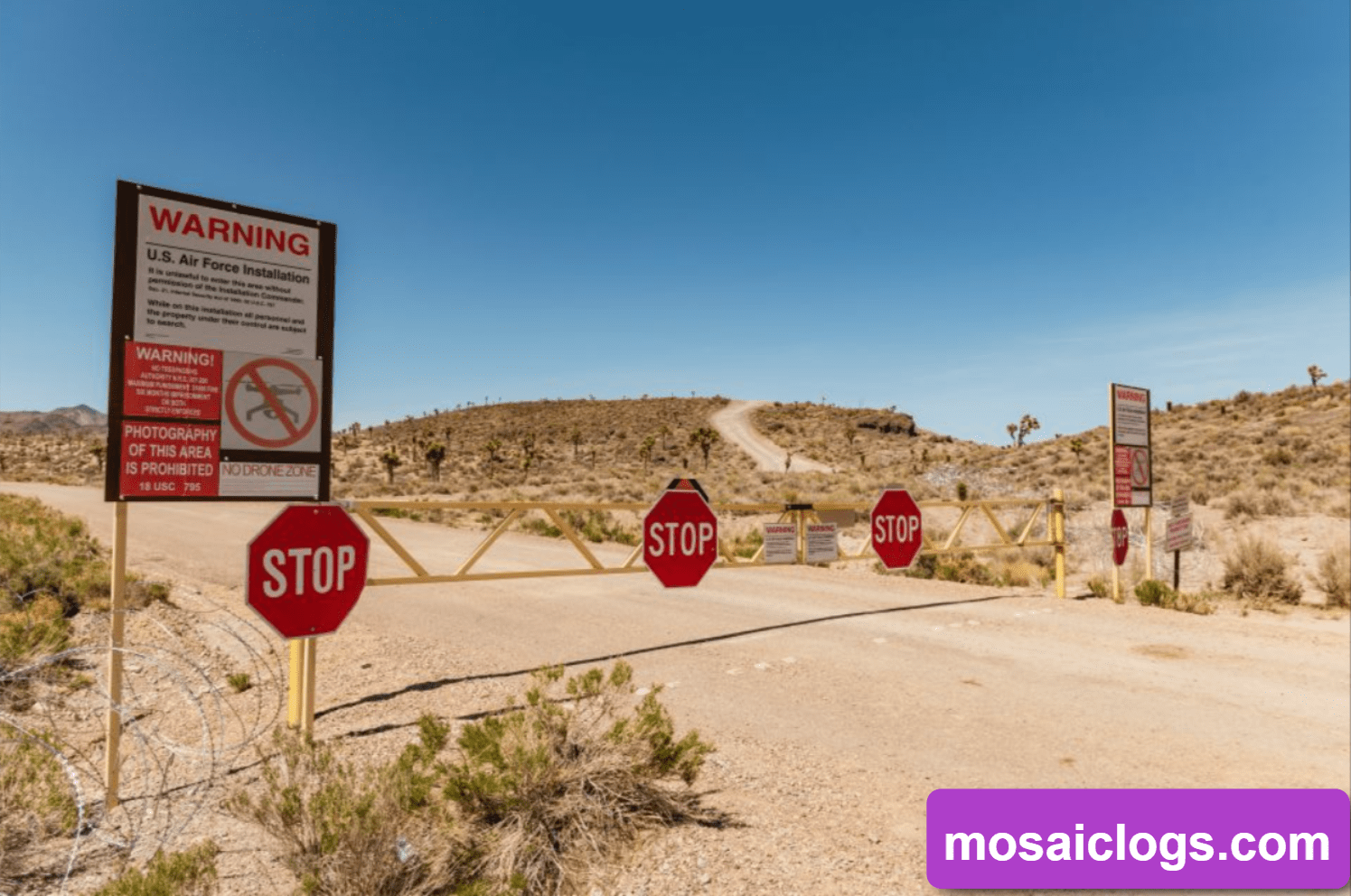Area 51 is closely associated with stories of unidentified flying objects (UFOs), secretive government operations, and the possible experimentation with extraterrestrial technology.
Location of Area 51
Nestled in the desolate expanse of southern Nevada, 51 Area is located at Groom Lake, approximately 120 miles (200 kilometers) northwest of Las Vegas. This remote and secretive U.S. Air Force facility has become synonymous with rumors of extraterrestrial technology and clandestine governmental operations. The base’s name, “Area 51,” originated from its designation on Atomic Energy Commission maps, though the military seldom uses this term. Established in 1955 as part of the expansive Nevada Test and Training Range complex, the base was also known as “Paradise Ranch,” a name used by aerospace giant Lockheed (now Lockheed Martin) to attract employees to the top-secret site.
Functions and Uses of Area 51
Area 51’s primary function was initially centered around testing high-altitude reconnaissance aircraft, starting with the U-2 spy plane. Over the years, it has been the site of significant technological advancements and the development of some of the most renowned aircraft in military history, including the Archangel-12, SR-71 Blackbird, and F-117 Nighthawk stealth fighter. Despite its pivotal role in aerospace innovation, the base’s exact activities have remained shrouded in secrecy, contributing to its enigmatic reputation.
The facility is part of the larger Nevada National Security Site (NNSS), a designation that reflects its importance in national security and defense. Although Area 51’s satellite imagery was once classified and restricted, it has been publicly viewable on Google Maps since 2018, offering a glimpse into the base’s layout.
The UFO Connection
The link between Area 51 and UFOs is largely fueled by speculation and conspiracy theories. The base’s association with unidentified flying objects (UFOs) stems from its role in testing advanced and experimental aircraft, which can sometimes appear as strange lights or objects in the sky. The term “UFO” itself denotes any unidentified aerial phenomenon and does not necessarily imply extraterrestrial origin.
One of the most significant contributors to the UFO mythology surrounding Area 51 was Robert Lazar, who in 1989 claimed to have worked on alien spacecraft at the base. Lazar’s allegations included viewing autopsy photos of aliens and working on recovered extraterrestrial technology. Despite being widely discredited, Lazar’s claims have had a lasting impact, fueling numerous conspiracy theories about extraterrestrial activities at Area 51. His stories, though debunked, have cemented the base’s place in the collective imagination as a center for alien research.
Area 51 in Popular Culture
Area 51’s mystique has made it a frequent subject in popular culture and media. The base has been featured in a variety of fictional works, contributing to its larger-than-life reputation. One of the most prominent portrayals is in the 1996 blockbuster film “Independence Day,” directed by Roland Emmerich. In this film, Area 51 plays a crucial role as humanity’s last defense against an alien invasion, showcasing its dramatic and fictionalized connection to extraterrestrial life.
On television, Area 51 has been depicted in several series. For example, in the 2011 episode “Day of the Moon” from the long-running show “Doctor Who,” the Doctor is held captive at the base, highlighting its role in sci-fi narratives. Additionally, the base made appearances in the Marvel Cinematic Universe, particularly in the TV series “Agents of Shield,” where it was featured in multiple episodes, reinforcing its association with secretive government activities.
The base also appeared in viral marketing for the film “Spider-Man: No Way Home,” with The Daily Bugle referencing a failed raid on Area 51 by individuals seeking evidence of alien life. This fictionalized account mirrored real-world events, adding another layer to the base’s pop culture significance.
The Storm Area 51 Movement
In 2019, the “Storm Area 51” movement emerged from a Facebook event created by Matty Roberts, a 20-year-old student from Bakersfield, California. The event, humorously titled “Storm Area 51, They Can’t Stop All of Us,” suggested that a large number of people could overwhelm the base’s security and uncover its secrets. The event garnered significant attention, with 3.5 million people expressing interest.
Although the initial concept was meant as a joke, it spurred real-life planning and speculation. On the designated date, an estimated 6,000 people attended a smaller, low-key event in the nearby town of Rachel, participating in activities such as hatchet-throwing and drinking alien-themed beer. Despite the hype, Area 51’s security remained intact, and the anticipated “raid” did not materialize.
